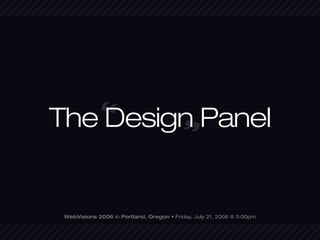The Design Panel
•
3 likes•465 views
The document summarizes a design panel discussion at WebVisions 2006 in Portland, Oregon. It introduces the five panelists and their areas of expertise. It then discusses some of the key questions and topics addressed by the panel, including what is wrong and right with design today, the most important elements of design, examples of innovative design elements from different websites, how to apply design elements to your own projects, and how to develop your own style while drawing inspiration from others.
1 of 33

































